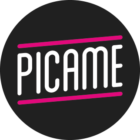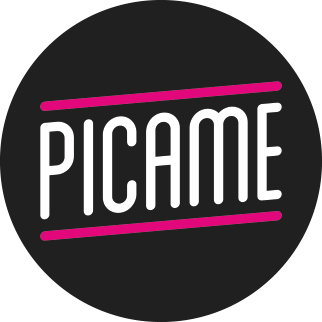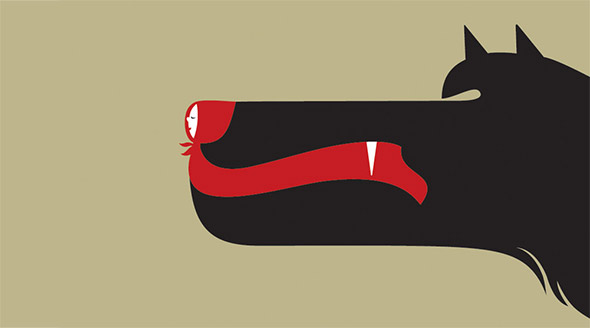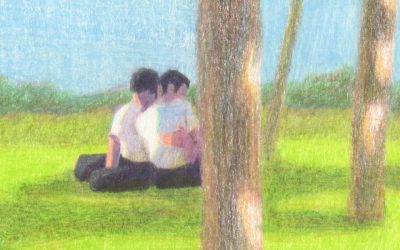[English version along the post]
Anche se non conoscete Noma Bar, avrete sicuramente visto un suo lavoro. Israeliano classe 1973, oramai onnipresente sulle copertine dei magazine di tutto il mondo, il suo stile costituisce un unicum nel panorama dell’illustrazione, collocandosi in un punto imprecisato fra ritratto, caricatura, pittogramma e graphic design e forse, come ha scritto il Guardian, spingendo quest’arte verso un’ulteriore dimensione.
Il tuo primo ritratto risale alla Guerra del Golfo: eri in un rifugio assieme alla tua famiglia e ad un tratto hai notato che se tracciavi il contorno del viso, il segnale della radioattività assomigliava decisamente a Saddam Hussein. Questo ti è valso il primo lavoro importante quando più tardi ti sei trasferito a Londra. A quale punto della tua carriera hai capito di aver realizzato qualcosa di unico nel panorama dell’illustrazione?
Quando il mio primo libro è uscito ed è stato venduto in oltre 30 paesi, ho notato che la mia arte visiva poteva colpire a prescindere dalle lingue, e ho cercato di ottenere commenti delle persone che hanno visto e riconosciuto il mio lavoro.
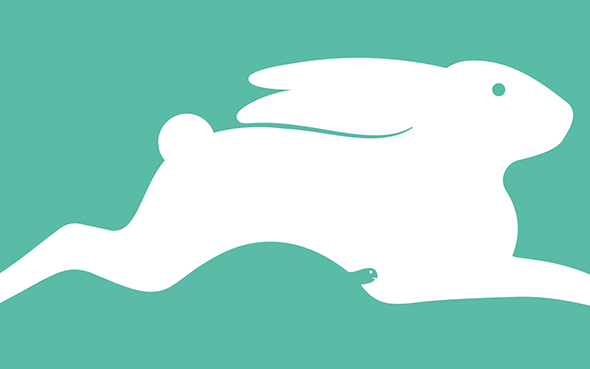
Quello che distingue più di ogni altro il tuo stile e lo rende immediatamente riconoscibile è la radicale essenzialità delle tue immagini: pochi segni, ancor meno colori. Ho trovato ricorrente nelle tue interviste l’espressione “mi sembra di fingere” relativo al rifiuto ad indugiare su decorazioni o abbellimenti, per dare spazio unicamente all’idea. Cos’è per te il concetto di “verità” e perché è così centrale nella tua produzione?
Mi piace essere onesto con me stesso e faccio quello che mi piace, il che consiste nell’elaborare nuove idee e riuscire laddove altri hanno fallito. Ecco perché passo ore ed ore a pensare, fino a giungere all’idea perfetta. Se trascorressi questo tempo a fare “decorazioni”, texture, eccetera ciò potrebbe contaminare il mio modo di risolvere i problemi e sminuire le mie idee.
A proposito delle tue fonti di ispirazione, mi ha molto colpito una frase: “Guardo dove molti altri non guardano. Per esempio agli oggetti sul pavimento. Succedono un sacco di cose sul pavimento. Guardo agli spazi negativi. Guardo allo spazio fra due macchine, invece che alle macchine. In un certo senso sto sempre a cercare e a ricevere l’informazione sbagliata” . Da dove viene questa attitudine: è un istinto innato, o una tecnica che hai elaborato nel corso del tempo?
Sono una persona curiosa, sto sempre lì a guardare, toccare e provare a convertire gli oggetti in qualcosa di diverso. Mi piace entrare in competizione con le cose che vedo. Direi che il mio istinto è quello di trovare le idee nei lati nascosti della vita. Non è propriamente una tecnica, ma un modo di vedere le cose.
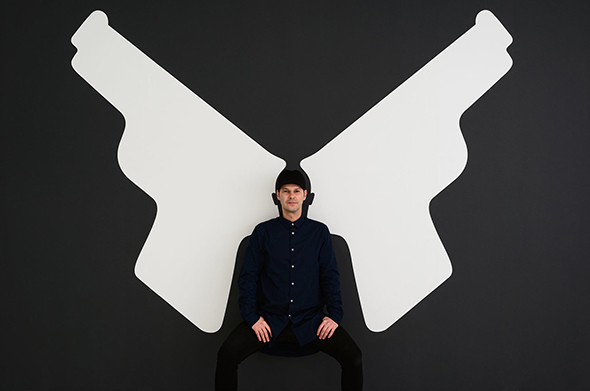
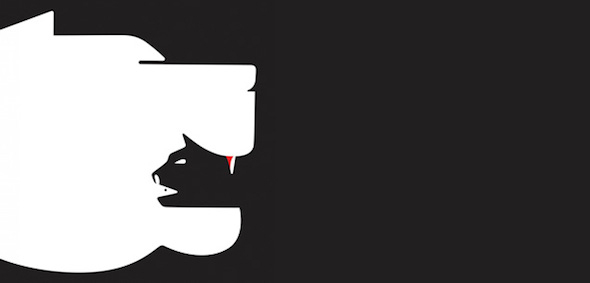
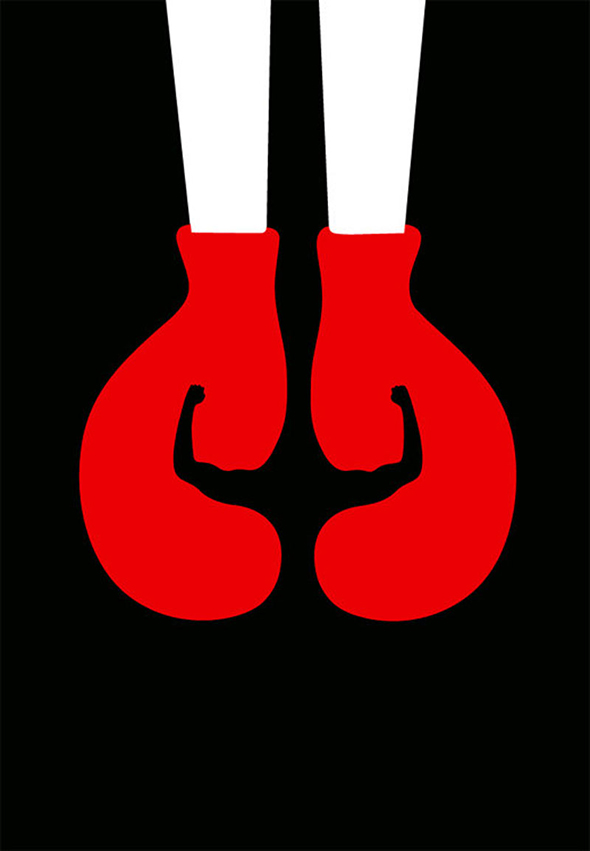
Ho letto che passi 19 ore al giorno nel tuo studio di Londra, praticamente la totalità della tua giornata, resta pochissimo tempo per il riposo. Che rapporto hai con il tuo lavoro?
Passo la maggior parte del giorno a disegnare sul mio sketchbook a Highgate Wood, di fronte al mio studio, per poi tornarvi e concretizzare le mie idee. Amo quello che faccio, sono molto felice di svegliarmi ogni giorno per una nuova sfida, piena di divertimento, infinite sorprese e creatività. I momenti imprevedibili mi fanno pensare che andare a dormire è una perdita di tempo prezioso.
“Non voglio essere semplicemente il ‘tizio che mette gli oggetti sulle facce della gente’. La paura di venire etichettato è sempre lì, e penso sia dove deve essere” . Come combatti il timore di rimanere intrappolato nella routine del tuo processo creativo?
Penso che la stampa “Facing Up” fornisca maggiori spiegazioni: l’idea di fare le mie cose senza guardare fuori, per poi prendere un grande respiro e dare uno sguardo di tanto in tanto. Un po’ come respirare con un boccaglio e vivere i 2 mondi – sopra e sotto – per mantenermi attivo.
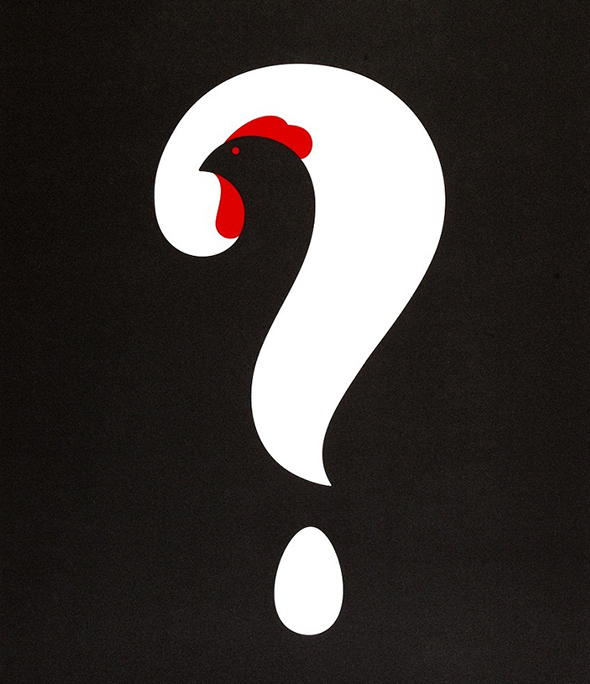
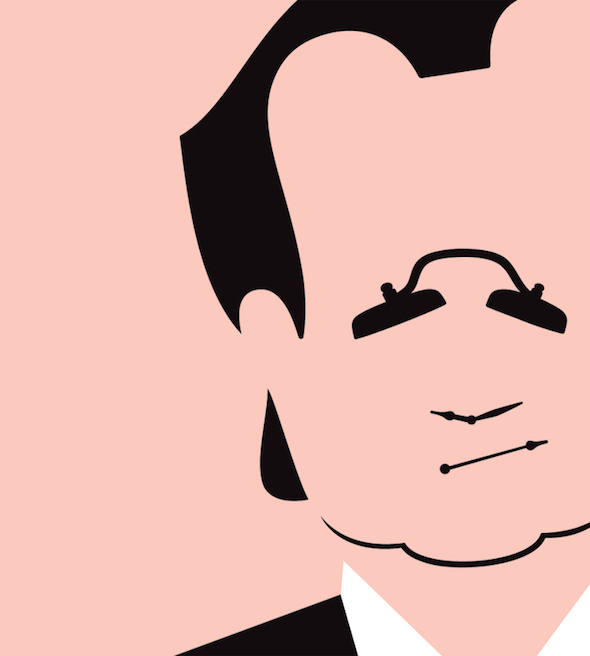
“Chineasy” è uno di quei progetti in cui più esplicitamente emerge il tuo background di tipografo e calligrafo. Come sei entrato in contatto con l’autrice? Avete intenzione di espanderlo?
Sono stato avvicinata dall’agenzia di design Brand New World che ha siglato il contatto con Shaolan (l’autrice). Un progetto molto interessante, ma non posso dire di più… 🙂
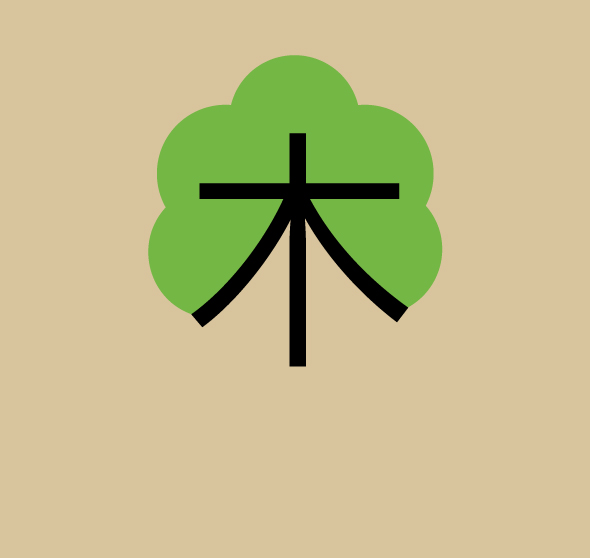
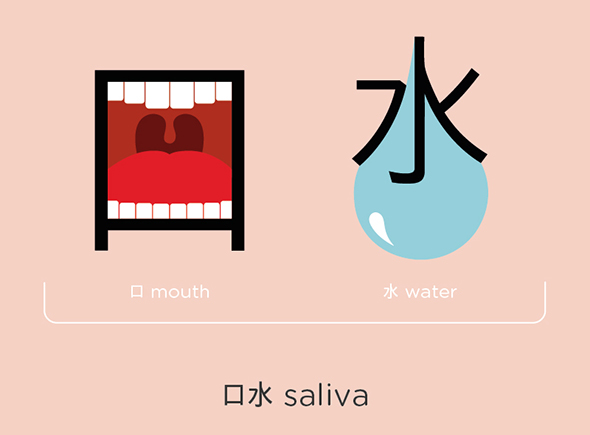
Un concetto che ti ho sentito citare spesso parlando di cosa ha influenzato il tuo percorso artistico è quello dell’improvvisazione, del reinventarsi: come prerogativa del popolo israeliano in generale, del tuo vicino di casa che da pensionato si è cimentato con i ready-made, della comicità negli anni del cinema muto. Quali sono i tuoi obiettivi, oggi che sei internazionalmente famoso e acclamato?
Continuo a fare le mie cose e mentre lavoro non penso al fatto che siano più o meno importanti. Avere sempre nuove idee e sorprese è l’aspetto fondamentale per me ed è per questo che mi piace fare il mio lavoro, senza per forza dover diventare un grande studio. Per me il piccolo è il nuovo grande.
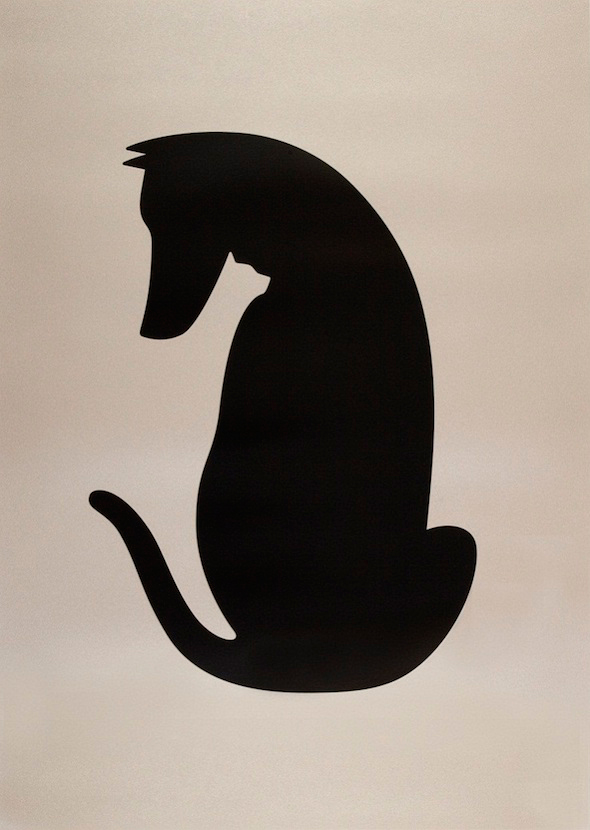
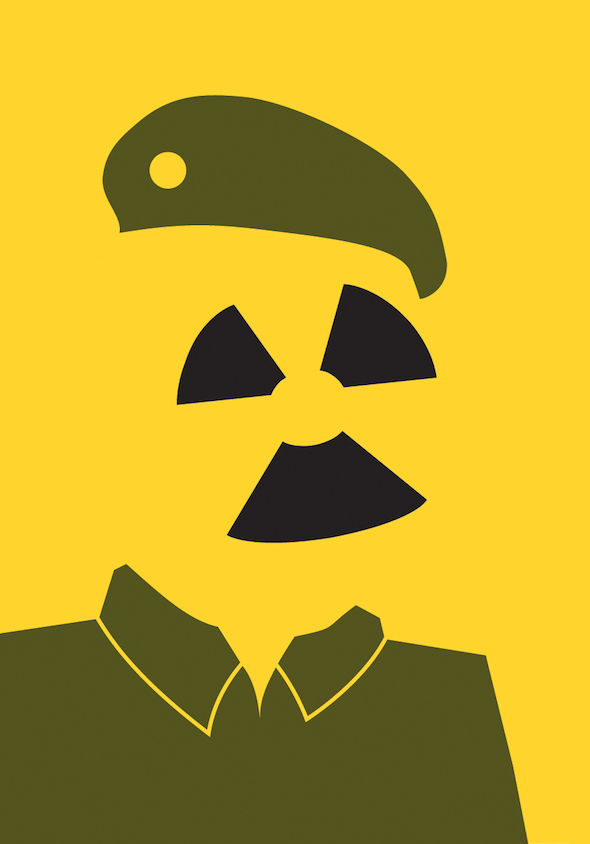
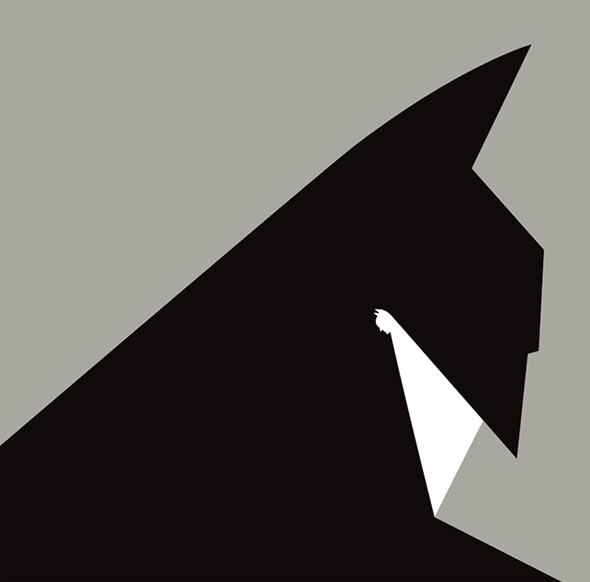
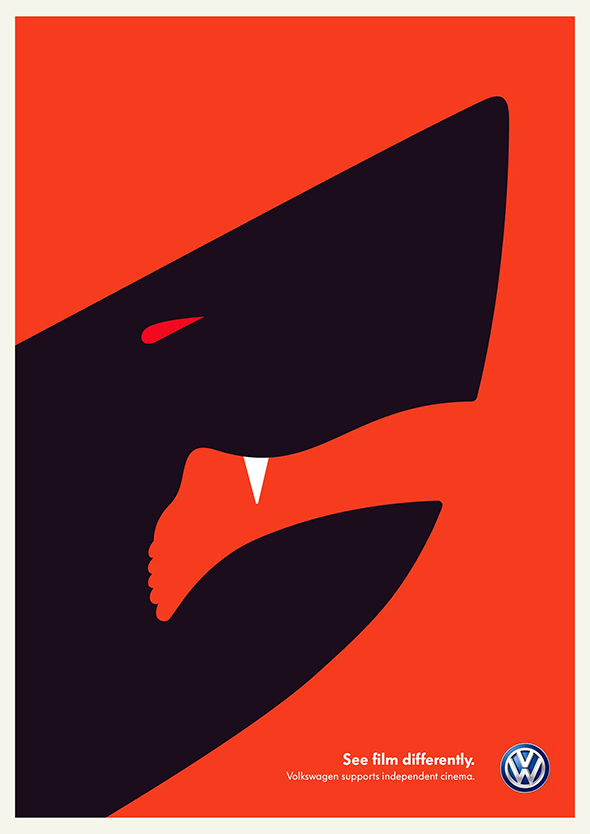
—
ENG
Hi Noma, welcome on PICAME. Your first portrait dates back to the Gulf War: you were in a shelter with your family and suddenly you’ve noticed that if you drew the contour of the face, the signal of radioactivity resembled much to Saddam Hussein. This assured you the first major work later when you moved to London. At what point in your career did you realize that you have achieved something unique within the illustration field?
I think that when my 1st book came out and sold over 30 countries, I’ve noticed that my visual is beyond any language… and i striated to get comments from people that they have seen & recognize my work.
The radical simplicity of your images makes it instantly recognisable and stands out your style more than any other: a few lines, still less colours. I found recurring in your interviews the expression “I feel like I’m faking” refusing to dwell on decorations or embellishments, giving way only to the idea. What is for you the concept of “truth” and why it is so central to your production?
I like to be honest with myself and do what I like, which is thinking of new ideas & ‘turning a stones’ that no one have turned… So that’s why I’m spending hours and hours to think, coming up with the right ideas to my briefs. If I’ll spend this time on ‘decorations’, textures etc. it might effect the way I solve problems and simplify my ideas.
About your sources of inspiration, I was very impressed with one sentence: “I look where many people donít look. For example things on the floor. A lot of things happen on the floor. I look at negative spaces. I would look at the space between two cars, instead of the cars. In a sense Iím always looking and getting all the wrong information”. Where does this attitude come from? Is it an instinct, or a technique you’ve developed over time?
I’m a curious person, I always look, touch & try to convert things into something else. I like to get challenged with things that I see.. So I would say that my instinct is to find my ideas in the hidden sides of life. It’s definitely not a technic but a way of seeing things.
I have read that you spend 19 hours a day in your studio in London, virtually all of your day, so there is very little time for rest. What is your relationship with your job?
Most of the day I spend in making drawing in my sketchbook at Highgate Wood, opposite my studio, then going back to the studio to execute my ideas. I love what I do, so happy to wake up every day to a new challenge, packed with excitement, endless surprises & creativity… The unpredictable moments makes me think that going to sleep it’s a waste of a precious time…
“I don’t want to be just ‘the guy who puts things in people’s faces’. The fear of being pigeonholed is there all the time, and I think it should be there”. How do you fight the fear of being trapped in the routine of your creative process?
I think that my “Facing Up” print explains a bit more… the idea of doing my own things without looking out but then taking a big breath to look from time to time, it’s a bit like breathing with a snorkel mask, living the 2 worlds – up & under, That keeps me fresh…
“Chineasy” is one of those projects in which more explicitly emerges your background as a typographer and calligrapher. How did you get in touch with the author? Are you going to expand it?
I was approached by Design agency/Brave new world, who made the contact with Shaolan (the Author). It’s a very interesting project that extended at the moment, but I can’t say more…:)
“Improvisation” is the concept I’ve often heard you talking about. It has influenced your artistic career: as a prerogative of the Israeli people, of your retired neighbour with ready-made experiments, and of years of silent film comedy. What are your goals now that you’re famous and internationally acclaimed?
I keep doing my stuff, more or less famous, that’s not crossing my mind while I’m working. Getting new ideas and surprises is more important for me, and that’s why I like to do my own work, without growing to a big studio. I see every work as my signature, and for me small is the new big.
